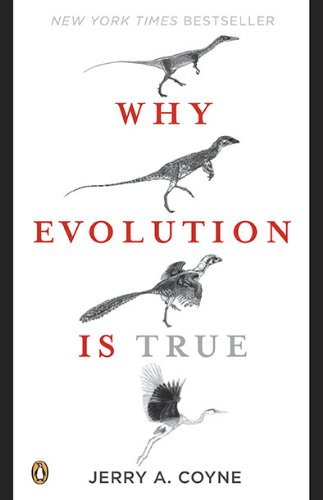The Biological Species Concept (BSC)
And when we think of why we feel that brown-eyed and blue-eyed humans, or Inuit and !Kung, are members of the same species, we realize that it’s because they can mate with each other and produce offspring that contain combinations of their genes. In other words, they belong to the same gene pool. When you ponder cryptic species, and variation within humans, you arrive at the notion that species are distinct not merely because they look different, but because there are barriers between them that prevent interbreeding.
Ernst Mayr and the Russian geneticist Theodosius Dobzhansky were the first to realize this, and in Mayr proposed a definition of species that has become the gold standard for evolutionary biology. Using the reproductive criterion for species status, Mayr defined a species as a group of interbreeding natural populations that are reproductively isolated from other such groups. This definition is known as the biological species concept, or BSC. “Reproductively isolated” simply means that members of different species have traits—differences in appearance, behavior, or physiology—that prevent them from successfully interbreeding, while members of the same species can interbreed readily.
Notes:
A species is defined by the fact that its members can breed with one another.
Folksonomies: biology definitions species
Taxonomies:
/science/biology/zoology/endangered species (0.618268)
/science/biology/breeding (0.575012)
/science/medicine/genetics (0.347033)
Keywords:
biological species concept (0.905368 (neutral:0.000000)), geneticist Theodosius Dobzhansky (0.646218 (neutral:0.000000)), Ernst Mayr (0.490272 (neutral:0.000000)), gene pool (0.424572 (negative:-0.274209)), cryptic species (0.423123 (neutral:0.000000)), reproductive criterion (0.416937 (neutral:0.000000)), natural populations (0.410935 (negative:-0.270810)), evolutionary biology (0.407467 (neutral:0.000000)), gold standard (0.406393 (neutral:0.000000)), species status (0.390533 (neutral:0.000000)), different species (0.381404 (neutral:0.000000)), members (0.368192 (positive:0.314997)), BSC (0.327324 (neutral:0.000000)), humans (0.308020 (neutral:0.000000)), definition (0.291197 (neutral:0.000000)), Inuit (0.255150 (neutral:0.000000)), notion (0.253648 (negative:-0.205850)), offspring (0.252773 (positive:0.225843)), combinations (0.251928 (neutral:0.000000)), barriers (0.249833 (negative:-0.556431)), variation (0.248523 (neutral:0.000000)), genes (0.248315 (neutral:0.000000)), Kung (0.245686 (positive:0.221788)), fact (0.244894 (neutral:0.000000)), words (0.243582 (neutral:0.000000)), groups (0.239111 (neutral:0.000000)), behavior (0.238965 (negative:-0.327268)), physiology—that (0.238905 (negative:-0.272957)), Russian (0.238462 (neutral:0.000000)), appearance (0.238424 (neutral:0.000000))
Entities:
Ernst Mayr:Person (0.827634 (neutral:0.000000)), Theodosius Dobzhansky:Person (0.372167 (neutral:0.000000)), Inuit:Organization (0.314807 (neutral:0.000000))
Concepts:
Species (0.972852): dbpedia | freebase | opencyc
Evolution (0.715925): dbpedia | freebase | opencyc
Gene (0.550208): dbpedia | freebase
Biology (0.547170): dbpedia | freebase | opencyc
Organism (0.485276): dbpedia | freebase
DNA (0.471419): website | dbpedia | freebase | yago
Charles Darwin (0.467003): dbpedia | freebase | opencyc | yago
Life (0.424181): dbpedia | freebase





